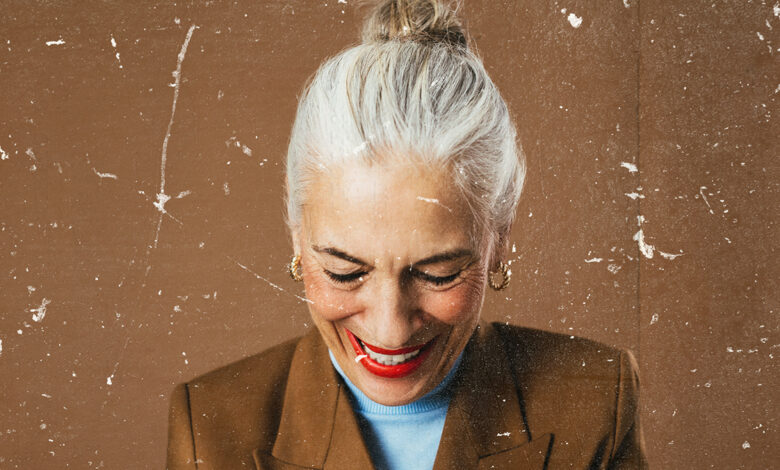Life-Stage Beauty: Beauty That Meets You Where You Are

Unlike the typical one-size-fits-all approach to product marketing, beauty brands are now positioning their products to better reflect precise concerns, says beauty reporter and Gloss Angeles podcast host Kirbie Johnson in an interview with Well+Good. Instead of only referencing “mature skin,” and telling those consumers their skin “requires” anti-aging products, for example, many brands will now specifically reference pre- or post-menopausual skin and speak to those specific needs, says Johnson.
These targeted beauty offerings aren’t happening in a vacuum, though—they’re part of a much bigger (and rapidly expanding) market. Both menopausal and pregnancy-care markets, for example, are expected to grow by nearly 6 percent annually, according to Grand View Research, reaching $24.4 billion and $42.3 million, respectively, by 2030.
Increased consumer awareness is partially driving these markets, thanks to the shared experiences from influencers of all ages, from tweens to seniors. 13-year-old TikTok creator Evelyn Unruh has gone viral this year for her hydration-focused, tween-friendly skincare routines, while 63-year-old influencer Gym Tan has amassed half a million followers across TikTok and Instagram for her skincare tips and makeup routines made for people over 50.
These first-person accounts can help educate followers—whether they’re 12 or 92—about aging, and how the beauty industry can help address their changing needs with the right product combinations. “You can go on TikTok and see influencers of all ages discussing every concern they might have,” says Addison Cain, a beauty specialist at the trends insight company Spate. “Consumers have way more touchpoints now than probably ever before, and also more products to address their specific and niche concerns.”
Skincare for puberty, post-menopause, and everything in between
People have distinct needs based on where they (and their hormones) are in life. Pregnancy and post-partum beauty lines tackle the hair and skin needs of a new mom going through massive hormonal shifts. Frida Mom designed a pregnancy skincare set aimed at soothing and moisturizing irritated skin, while Luna Daily offers a hospital bag essentials kit designed to support and calm laboring and postpartum skin, including a “nip and lip” balm. Evereden’sMama & Baby Discovery set contains gentle, fragrance free skincare options for both new mom and baby.
One particularly significant area of growth has been in the menopause and perimenopause space. Since 2020, roughly a dozen menopause-focused beauty brands have launched, including Womaness and Stripes Beauty. Both brands go beyond the basic anti-aging skincare of previous competitors by offering an additional range of products to support the vaginal dryness, low libido, and hot fashes and brain fog that can come with menopause.
Existing brands are also jumping on the menopause bandwagon: Skincare brands No7 and Prai Beauty now offer product lines for menopausal skin, while hair brand Charles Worthington launched a line of moisturizing and volumizing hair products this year that, according to the brand, were “developed and tested on perimenopausal and menopausal women.”
Reshaping the narrative
Some beauty brands are also reclaiming how we view life’s changing moments. Makeup brand Sarah Creal Beauty, launched in 2024, takes a cheeky approach to aging by showing that makeup in menopause can be fun, not dour. Lipstick names from the brand’s Speak for Yourself line include Mansplain and Pay Equity, and the products themselves have been specifically formulated to apply better and wear longer on fine lines and wrinkles.
“There’s a misconception that once you get to a certain age, beauty stops being about fun and starts being about fixes and solutions,” says Cain. But with these new product offerings and a changing marketing landscape, “there’s plenty of room for play,” regardless of your age, she says.
Thankfully, we’re also seeing the conversation change for younger generations too, who—due to social-media exposure—are largely more accepting and less embarrassed of puberty than previous generations. Skincare brand Starface, in return, has helped normalize teen acne with colorful, star-shaped pimple patches, while TikTok-famous brand Bubble has become a skincare safe haven for teens (and, frankly, everyone), thanks to its gentle yet effective formulas.
Products for mid-life conditions are also appearing on shelves. People in their 20s and 30s may experience period acne, emerging wrinkles, and under-eye puffiness from sleep deprivation, all at the same time. Esthetician Sofie Pavitt’s eponymous line is specifically designed for adults prone to acne (Johnson views Pavitt’s line as an “elevated Proactive”), while the “face yoga” app Luvly offers advice on what beauty products to use during your different menstrual cycle phases.
Meanwhile, in January 2025, Bliss is said to reposition itself as a line for “elder millennials,” according to Sara Mitzner, vice president of brand marketing at AS Beauty Group (whose portfolio includes Bliss). Details are still under wraps, but products will allegedly address the “in-between” nature of this life stage. “Customers feel really good about purchasing from brands when they know they’re not trying to be everything to everybody—they’re specifically [made] for them,” Mitzner tells Well+Good. “There are so many brands to choose from, so you’re going to look for one that’s really for you.”
Of course, at the end of the day, we all have highly unique needs that often go beyond the basic acne and wrinkles. It’s unlikely that beauty brands will ever be able to satisfy our every need and concern, but the changing landscape shows promise—and, better yet, positivity. Where most beauty brands had previously ignored or further stigmatized inevitable life stages (conceal that zit! Mask those fine lines!), many product lines are now opting to embrace and celebrate change, helping consumers everywhere to feel seen, not shamed.
Our editors independently select these products. Making a purchase through our links may earn Well+Good a commission.

